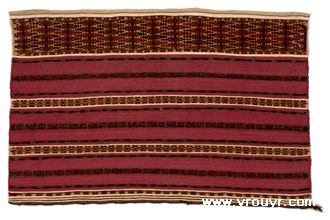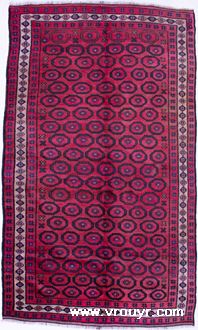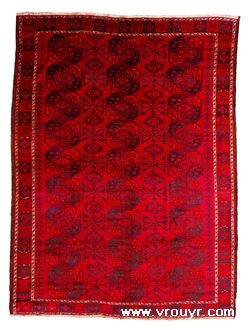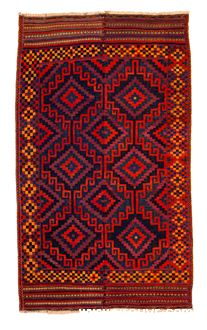Djulshir
ref: 38939
2500 - 5000 EUR
83 x 318 cm
2' 8⁵/₈" x 10' 5¹/₄"
warp and weft: wool
pile: wool
Central Asia
Coulours may appear different on the website than in reality. All mentioned prices and sizes are indicative and not binding. Possibly some rugs that are still online, are not available anymore in the showroom.
Djulshir means as much as bearskin. The Arabic-Persian term refers to the long-haired carpets from the heart of Central Asia, knotted by Uzbeks, Kazakhs and Kyrgyz.
Fabrics are the primary artistic expression of the Turko-Mongolian peoples, who have played such an important role in world history. As a primary expression of the art of the Uzbeks, Kazakhs and Kyrgyz, djulshir carpets are not only essential and important for our knowledge of these cultures, they are also at the beginning of nomadic weaving in general.
Probably many pieces originate from northern Afghanistan, inhabited by an important population of Uzbeks and Kazakhs who fled after the October Revolution of 1917. These were the strongest nomadic families who still experienced their tribal traditions intensely. Taking into account the age and tribality of most fabrics, a large part was still woven in Uzbekistan and Kazakhstan, before the exodus to Afghanistan.
Djulshir were woven by nomadic and semi-nomadic families, who continued to celebrate their isolated tribal traditions. In addition to these long-haired, these populations also wove short-pile carpets and other fabrics such as kilims, bags and tent bands. The pieces, woven on narrow looms, were often sewn together afterwards. Many pieces are of the so-called 'runner' type: narrow ones. long carpets intended for the nomad tent (yurt).
The djulshir belonged to the essential part of the dowry. These artworks were made by women, probably not by girls but by mothers. These women, the conservative part of the tribal community, ensured that the old tribal values were kept alive from generation to generation.
YOU MAY ALSO LIKE

 Visit Vrouyr2
Visit Vrouyr2



 favourites
favourites










